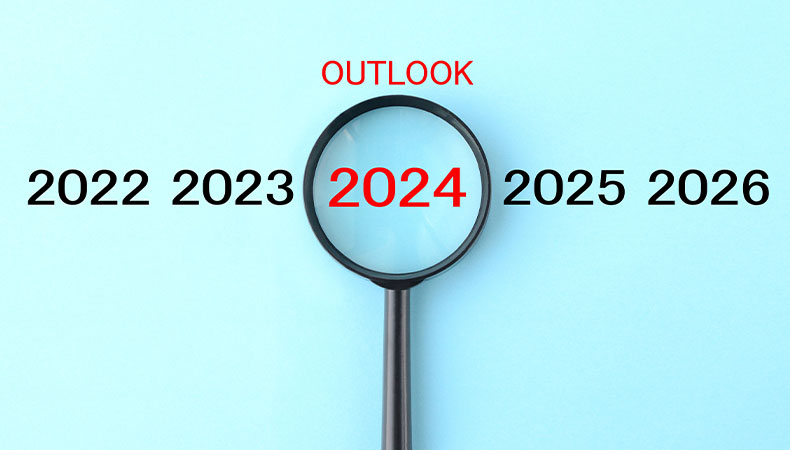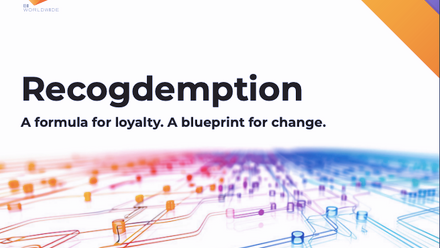What can we expect for total reward in the rest of 2024?
The last five years have thrown up non-stop challenges for businesses and their people agendas. What can we expect next?
To try and predict this, let’s first look at what the macropolitical and economic drivers have been and their impact.
- Reduction in the supply of labour, driven by two main factors - a reduction in immigration since Brexit, and people leaving the workforce during and since the pandemic.
- High inflation and a resulting cost of living crisis, which has been driven in a large part by the war in Ukraine and more recently Gaza.
- Employee expectations are changing, particularly since the pandemic. These centre mainly around whether people choose to work at all (see the point above about leaving the workforce), where they are prepared to work (hybrid working), what type of work they will do and who they will work for and how flexible the reward arrangements are.
- Changes in legislation, such as the recent EU laws on pay transparency and big increases in national living wage. We have also seen very large equal pay claims, running in the billions for some employers.
- Digital disruption, initially driven by a growing number of businesses moving online but more recently as a result of the rapid growth of AI solutions.
Inflation and the labour market
The reduction in the supply of labour has made it hard for many employers to attract and retain employees.
Two years ago, we saw record levels of job vacancies and large spikes in pay for certain roles e.g. lorry drivers.
This has eased with the slowdown in the economy in the last year but expect this problem to be back as the economy picks up in the second half of this year.
Even now starting pay continues to rise as companies face competition for skilled workers and to combat rising cost of living.
We have also seen National Living Wage increase significantly driven by inflation with a 10% increase to £11.44 per hour for those aged 21 and over from April 2024.
While NLW rates will start to come down with inflation, they will have squeezed the pay of line managers and other slightly higher graded roles.
Changing employee expectations
The changes in employee expectations still feels like a battle, particularly around hybrid working.
Many employees like the flexibility of hybrid working in contrast to those who would like to see everyone back at the workplace, with a handful mandating a return to office five days a week.
There seem to have been some considerable benefits to a hybrid and flexible style of working.
According to recent labour market data by the Office of National Statistics (ONS), the post-pandemic working period has seen a boost in the number of women joining full-time work, largely due to more companies offering a flexible and hybrid work style.
However, others do feel that there are benefits of being in the office (potentially full time) such as productivity, creativity etc.
Flexibility on place of work has had a knock on to other types of flexibility.
The value placed on time off seems to have increased and we have seen employers increasing holiday entitlement and days off for volunteering.
KPMG’s own research shows that having more flexibility around shift patterns can reduce attrition by 20%.
We also see a growing trend in employees looking for their employers to be progressive in the package that they are offering around ED&I, ESG and lifestyle.
Fundamentally, the more flexible and progressive an employer can be, the bigger the talent pool that they will have to pick from.
With a smaller labour market and pressure on salaries, re-thinking the overall package (and communicating it effectively) could make a vital difference.
The ability to effectively communicate the content and value of the reward package and segment that communication to create a more personalised message is growing in importance.
Changes in legislation
Of equal importance is new legislation shaping the world of reward, for instance around equal pay and pay transparency.
Changes in legislation mean employers getting their fundamentals right.
If you don’t have effective employee structures (e.g. a grading and pay structure), how can you set pay correctly, understand your equal pay position, ensure that you don’t fall foul of minimum wage levels by accident and communicate pay effectively to employees?
Furthermore, Labours new Make Work Pay plans includes changes in several areas around equal pay, fair pay, worker rights that are likely to have a significant impact.
Attracting and retaining tech talent
The challenge in attracting and retaining digital talent is not new and is not going away either.
From a reward perspective, a lot of the areas outlined above (around attraction and retention and changing employee expectations) will equally apply here.
However, in addition to this, the digital population is also the part of the business where two other factors may apply:
- It is often the area where very specific skills are required and,
- This group is more likely to work in an agile way.
For the first point the creation of a skills architecture to enable organisations to better use their existing workforce and plan for a future workforce is likely to become critical.
We are already starting to see an expansion of skills-based pay aligned with a skills architecture.
For the second point the question is whether an annual performance and review cycle are relevant to an agile employee population, where work and successes are measured in two-week sprints.
Is greater flexibility needed for this population with more frequent pay increases and promotions potentially linked to projects and/or skills development?
Could much more frequent recognition be better than an annual bonus scheme?
The pressure on attracting and retaining talent has relatively lightened as a result of a flat economy over the past year, even as employee expectations have evolved.
However, as the market picks up towards the end of the year, this stands to change. Now is a good time to ensure your total reward approach is attractive to the talent of the future.
* This article has previously been published on KPMG website here.
Supplied by REBA Associate Member, KPMG LLP
KPMG total reward and benefits solutions cover: Assessment, Design ,Compliance, Legal and Technology








